Anacopian battle. Under the cover of legends and myths
Arab expansion in the Caucasus
The Umayyad caliphate, which began active expansion in the second half of the 7 century, quickly subjugated a number of peoples. The Umayyad dynasties managed to capture North Africa, part of Central Asia, the southern part of the Iberian Peninsula, the southern and western Caspian lands, etc. And in the beginning of the 30-s of the 8-th century, the gaze of the Arab caliph Hisham ibn Abdul-Malik turned to the Caucasus.
Soon, Caliph Hisham appointed Marwan II ibn Muhammad (eventually becoming the last Umayyad caliph) ruler of the new Caucasian lands. And in order to pacify the local population, Marwan was given an army in 120-130 of thousands of soldiers. True, these figures cause very big doubts, because the caliphate at that time was at war with Byzantium, and rebellions and the struggle for power within the caliphate itself diverted a lot of forces.
One way or another, but Marwan became the governor of the caliph in the Caucasus in the 732 year. By the time of the battle near the walls of Anacopia, Marwan had already won the “fame” of a brutal commander who conducted a series of devastating raids from Georgia to the lands of modern Armenia. The Kartvels even called Marvan “deaf” (“deaf to suffering and supplications”), and the Armenians called him Marwan the Reaver. At the same time, several decades ago, the Georgian princes themselves invited the Arabs to their lands - only in alliance with them could the Kartvels resist Byzantium. Sometimes a tangle of political steps and “unions” is extremely painful for those who turned this tangle.
Finally, the Arab conquerors went through fire and sword through the eastern principalities of modern Georgia, and after that invaded the western and southern principalities. The Kartli mtavars (princes) Mihr (Mirian or Mir) and his brother Archil with a small army fled from the Arab invaders. At first they found shelter in Lazik (Lazistan, Egrisi, the Laz kingdom), but, pursued by Marwan, fled further to the lands of the Abazians - Abazgiya (modern Abkhazia).
Meanwhile, Marwan ravaged almost all the major cities and the fortifications of Lazica, which at that time was called the Principality of Egrisi. Even the walled city and the capital of the principality Tsihe-Goji (now called Nokalakevi) fell under the pressure of the frantic Marwan. Until now, on the site of the former capital Egrisi, the remains of the massive walls of an ancient fortress rise - all that remains of Ciehe-goji.
After the ruin of the southern Georgian principalities, Marwan rushed north to Abazgiya, having a formal reason to punish the Abazgs for harboring the enemies of the caliphate.
Enemy on the Doorstep
At that moment, Prince Leon I ruled Abazgia, and Anacopia was the capital of the principality with a powerful citadel on the top of the Iverskaya Mountain. At the same time, the Kartli princes, whom Georgian historians refer to as kings, managed to establish contact with Leon in advance and agree on alliance against the common enemy - the Arabs. Perhaps this union would not exist at all if it were not for the bloodthirstiness and vengeance of Marwan. For example, Marwan ordered the Argve princes to be brutally tortured, later they were hanged upside down, carefully tied, and after that they hung heavy stones around his neck and threw them into the Rioni River.
Naturally, Mihr and Archil rushed precisely to Anacopia. Only there they could count on some chance to jointly fight off Marwan’s troops. There is no exact information about the army of the Kartli princes. Some sources claim that Mihr and Archil had only a detachment of a thousand fighters, consisting of princely squads and people from their eristavs (a title equal to the title of a duke or Greco-Roman strategist). According to other sources, the army of runaway rulers reached three thousand soldiers, which was possible, because from the ravaged southern Georgian principalities, the population rushed north.
The Abazg army at the Anakopia fortress numbered about two thousand soldiers. At the same time, Prince Leon himself was not in the fortress at that moment. At that moment, he was in a certain Sobgi fortress, located on a mountain pass on the way to Ossetia. According to historians, the prince tried to conclude an allied treaty with the Alans in order to together try to repulse the ongoing Arab invasion. Marwan’s army numbered from 20 to 40 of thousands of soldiers.
Almost all information about that battle is described by only three authors. Moreover, one of them is nameless, only his work is known - “Martyrdom of David and Constantine”. Two other authors are Leonti Mroveli, who wrote “The Martyrdom of Archil” in the 11 century, and Juansher Juansheriani, who also wrote the 11 century, “The Life of Vakhtang Gorgasal”. Alas, this state of affairs creates a lot of confusion - often the authors contradict each other. In addition, the narrative itself is very specific and Christian religiously, having many references to the conduct and heavenly patronage of the host.
The latter can be explained by the fact that at that time the Caucasus was still largely a Christian region. And whatever political contradictions stood between the Kartli, Laz or Abazg princes, they were all Christians opposed to Muslims. The naming of the Arabs in one of the works - “pagans” also speaks of the degree of purely religious hostility towards the invaders.
The battle at the walls of Anacopia
The most fully and in detail the battle and its results were described by Juancher Juancheriani. It was on the basis of his work that many historians reconstructed the battle at the walls of Anacopia. So, Juanscher wrote:
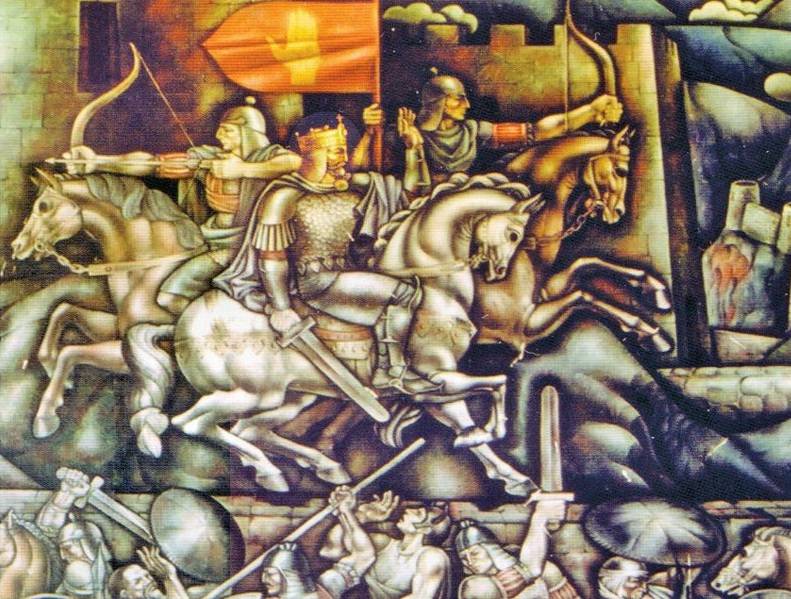
Behind the specifics of the presentation is the fact that foreign troops in this area often suffered from climate, heavy rains and heavy roads. Therefore, it is likely that the majority of Arabs, accustomed to a diametrically different terrain and climate, were infected with the terrain's characteristic diseases. An epidemic in an adversary’s camp is always a gift for the defenders. Thus, even before the start of the battle, the Arabs were mowed down by the “subtropics general,” so to speak.
The battle itself, according to Juansher Juansheriani, began at dawn, when Mihr and Archil, together with the combined forces of the Abazgs and Kartvel, came out towards the Arabs. The demoralized forces of the Arabs lost that battle. According to Juansheriani, up to 35 of thousands of soldiers fell from disease, and three thousand lost their lives from the sword. The survivors fled from these lands, led by Marwan.
Thus, the following factors influenced the outcome of the battle: the rallying of the Kartvels and Abazs in the face of a common enemy, the religious nature of the war, the bloodthirstiness of Marwan himself, the shortsightedness of the Arab commanders in relation to the specific terrain they were going to conquer. And also we should not forget the importance of Anakopia fortress. For example, according to the anonymous author of “The Martyrdom of David and Constantine,” the Arabs won the battle, but they smashed their strength against the walls of the fortress and retreated.
The heart of Anacopia is a powerful citadel on the top of the Iverskaya Mountain (height -344 meters above sea level). In length, the Anakopian citadel reaches 83 m, and in width - 37 m. The height of the walls reached five meters, and the thickness in some places exceeded a meter. Walls were erected from tightly fitted limestone blocks about 60 cm long and wide. There are several buildings inside the citadel, including cult ones, as well as a deep well with enough water for the siege (it is in working condition).
In addition, some time before the Anacopian battle, the fortress was surrounded by another line of defense, distant from the citadel. This line consisted of eastern, southern and western fortress walls, the most powerful of which was the southern wall, reinforced by seven towers. Thus, Anacopia, as a whole defensive complex, in itself was able to make the enemy think about the feasibility of a siege in a hostile territory and climate. As a result, one way or another, but the Arabs retreated, leaving Abazgiya and Egrisi and suffered a political defeat, reflected in the rise of the Abazgs and Kartvels, whose union, however, did not last long.
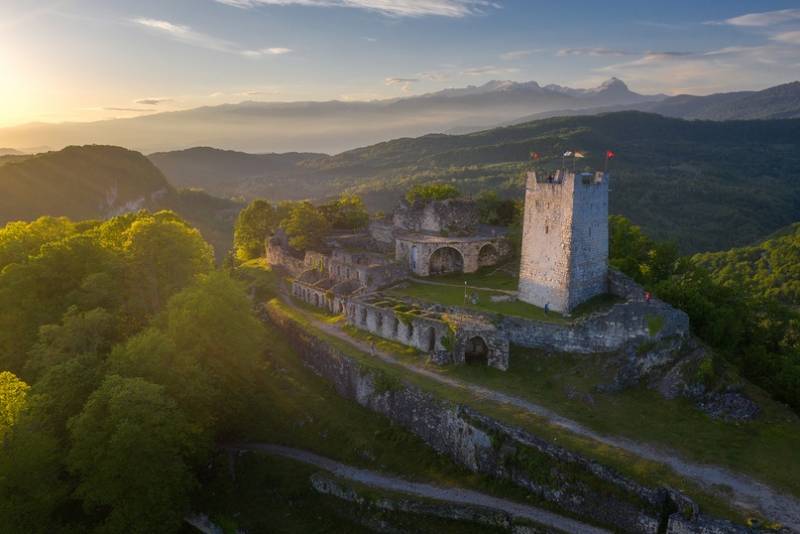
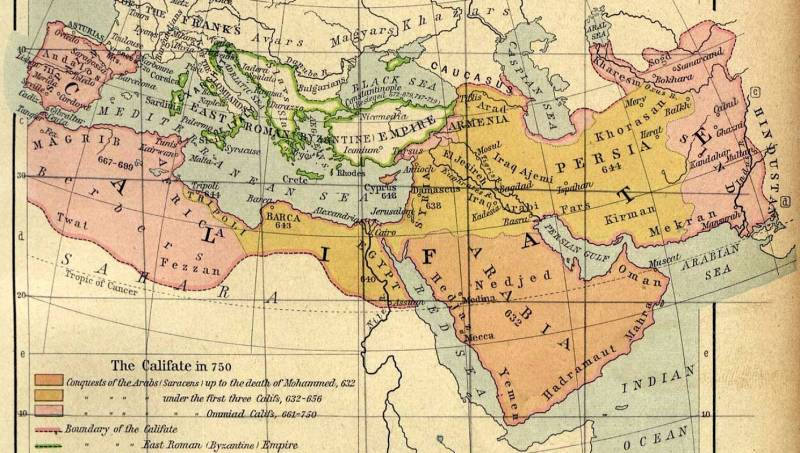
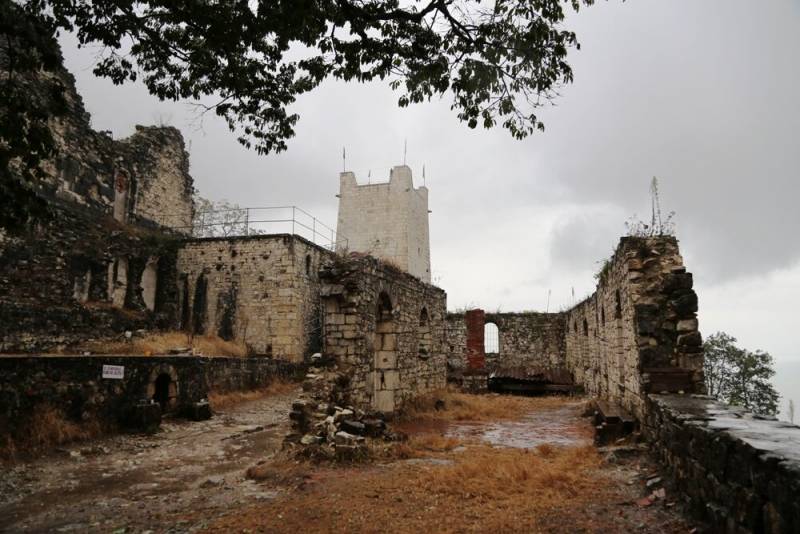
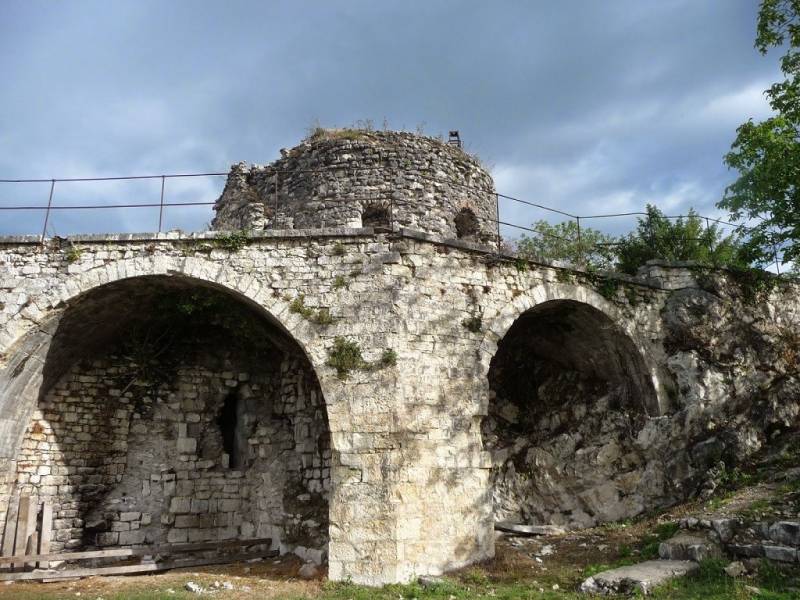
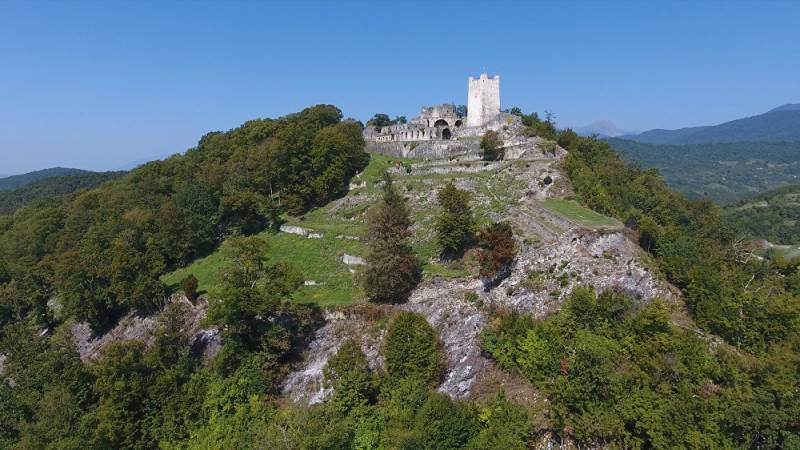
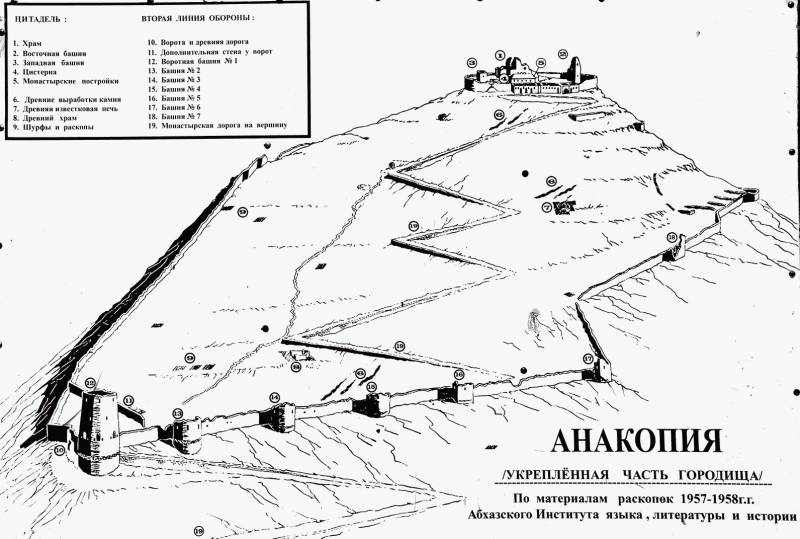
Information